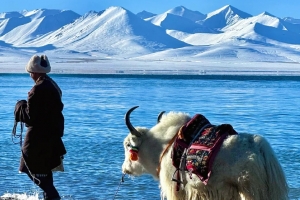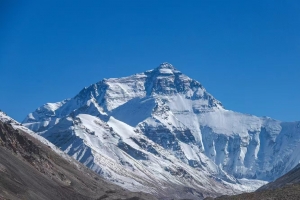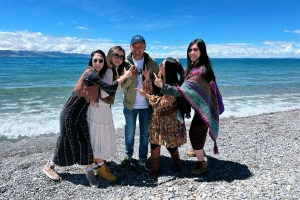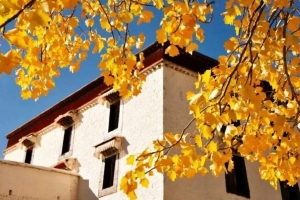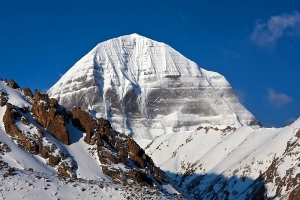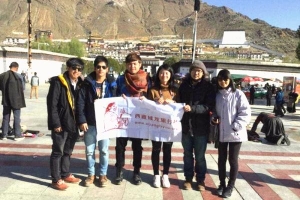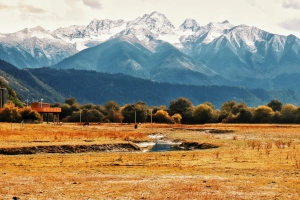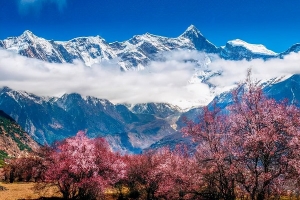“Can I use a credit card in Tibet? What is the money of Tibet?”When planning a trip to Tibet, understanding how money works is crucial. From handling the Chinese currency to navigating ATMs and knowing the ins and outs of credit cards, money exchange, international transfers, and local payment customs, being well-prepared can make your journey smoother. In this guide, we break down everything from the basics of Chinese currency to practical tips on using ATMs, credit cards, and mobile payments, as well as advice on exchanging money and abiding by local financial customs.
Currency Fundamentals in Tibet
China’s official currency, known as the Renminbi (RMB) or “people’s money,” forms the foundation of all monetary transactions in Tibet. The primary unit is the yuan, which is symbolized by the letter “Y.” Among locals, the term “kuai” is frequently used in conversation instead of yuan. For smaller amounts, the currency is subdivided further: ten jiao (commonly called mao) make up one yuan. Understanding these units is the first step in managing your finances while exploring Tibet’s unique culture.
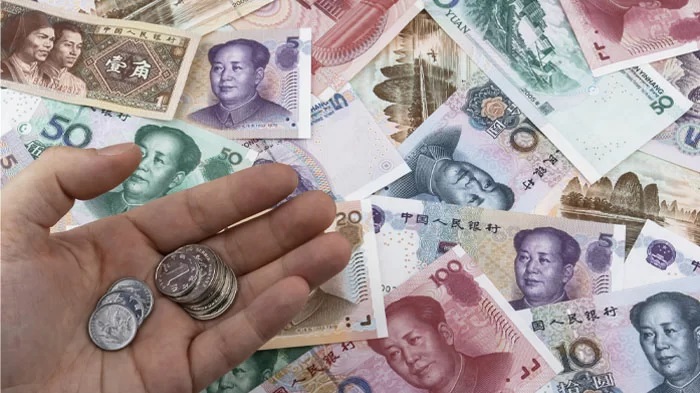
Navigating Cash and ATM Accessibility
While technology is making global inroads, cash remains the backbone of financial transactions in Tibet. Major cities like Lhasa, Shigatse, and even remote locations such as Ali are equipped with ATMs that accept foreign cards, though with some limitations.
ATM Usage and Limits
- International Card Acceptance: ATMs operated by institutions like the Bank of China are designed to accommodate major international cards such as Visa, MasterCard, Diners Club, American Express, Maestro, Cirrus, and Plus. The Agricultural Bank also provides services for cards like Visa, Plus, and Electron.
- Transaction Caps: Typically, you can withdraw up to around Y2000 per transaction. Planning multiple transactions might be necessary if larger sums are needed.
- Operational Hours: Since ATMs can sometimes malfunction or “eat” cards, it is advisable to complete transactions during bank operating hours when assistance is available.
This careful planning ensures that you have continuous access to funds during your travels and minimizes the risk of encountering inconvenient setbacks.
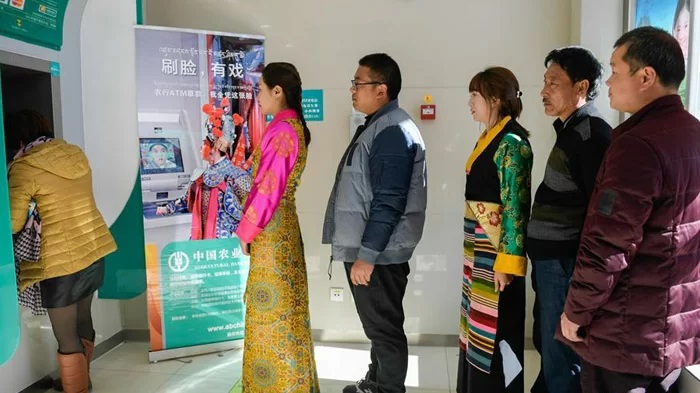
Credit Card Acceptance in Tibet
While credit cards are a popular payment method in many parts of the world, their usage in Tibet is rather limited. Credit cards are mostly accepted in high-end hotels and a few well-established shops or service centers. When using credit cards, keep the following points in mind:
- Hotel and Service Payments: Major hotels in Lhasa and Shigatse generally accept credit cards, though small local vendors, tour agencies, and transportation services mostly prefer cash transactions.
- Surcharges and Fees: The few establishments that accept card payments often add an extra 3–4% surcharge to cover processing fees.
- Cash Advance Limitations: The Lhasa Central branch of the Bank of China allows cash advances on credit cards, but note that a 3% commission is applied on each advance.
Due to these limitations, it’s advisable to rely on cash for most transactions and reserve your card for emergency or high-value purchases only.
Exchanging Money: Best Practices and Locations
Currency exchange is a crucial aspect of preparing for your Tibetan adventure. The best place to exchange foreign currency is through the Bank of China, which operates multiple branches across Tibet, including in Lhasa and other major cities like Shigatse and Ali.
Key Points for Currency Exchange
- Main Exchange Hubs: Outside of the renowned banks in Lhasa, top-tier hotels may offer exchange services exclusively to their guests. Other exchange points are found in Shigatse, Zhangmu (especially near the Nepal border), and Purang – although note that Purang deals with cash-only transactions.
- Denomination Considerations: When traveling in rural or upcountry areas, aim to have small denominations (such as Y50 and Y100 bills) on hand, as larger notes may be difficult to spend.
- Accepted Foreign Currencies: At the Lhasa branch of the Bank of China, currencies from Australia, Canada, the US, the UK, Hong Kong, Japan, the Euro zone, and other parts of Western Europe are typically accepted at official rates. There is usually no commission fee for these exchanges.
- Reconverting Yuan: If you need to change leftover yuan back into your home currency, the same central branch of the Bank of China in Lhasa handles this service. Ensure you keep your original exchange receipts as they are necessary for the transaction.
- Vigilance Against Counterfeit Notes: Be extra cautious with Y100 and Y50 notes, as counterfeit currency is a known issue. Many local vendors scrutinize these bills by checking for proper watermarks and overall condition.
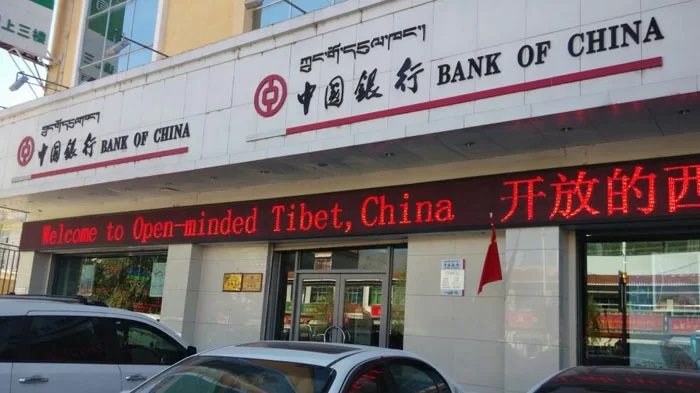
International Money Transfers and Services
Receiving funds from abroad while in Tibet can be challenging but is possible through a few established methods:
- Bank Wire Transfers: You can have money sent via a wire transfer to the Bank of China’s central office in Lhasa. Before proceeding, double-check the account number, branch address (28 Linkuo Xilu, Lhasa), and the SWIFT code (BKCHCNBJ900) with the bank.
- Western Union: Alternatively, Western Union provides transfers through the Express Mail Service at Lhasa’s main post office, making it a viable option if you face unexpected expenses during your trip.
These options ensure that you can receive financial support from home even in remote regions of Tibet.
Local Taxes, Tipping, and Bargaining
Understanding the local approach to additional charges and payments can enhance your travel experience:
- Taxes and Service Charges: Major hotels often add a service charge of 10% to 15% on top of the standard bill. Meanwhile, other taxes like airline departure taxes are generally included in the price tags, so hidden costs are minimal.
- Tipping Etiquette: Tipping is not widespread in Tibet. However, if you join an organized trip—especially in remote areas—tipping your guide or driver at the end of the tour is customary if the service was satisfactory.
- Bargaining: In many Tibetan markets, shopping experiences involve haggling. Practice your bargaining skills with politeness, as a respectful approach often leads to better deals while fostering positive relationships with local vendors.
Payment Innovations: Mobile Payments and Digital Options
Modern technology has also permeated Tibetan commerce. Mobile payments via Alipay, WeChat Pay, and even Apple Pay are widely accepted in urban areas like Lhasa, making transactions faster and more convenient. Here’s what you need to know:
- Mobile Payment Adoption: Many restaurants, hotels, and shops now offer QR code payment options. This is a boon for those who prefer digital transactions over carrying large amounts of cash.
- Credit vs. Mobile Payments: While credit cards have limited acceptance, mobile payment platforms have become an integral part of day-to-day transactions, especially in urban centers.
- Cash Is Still Key: Despite the increasing popularity of mobile payments, cash remains king in more remote areas. It’s therefore important to have a balanced mix of both cash and digital payment options.
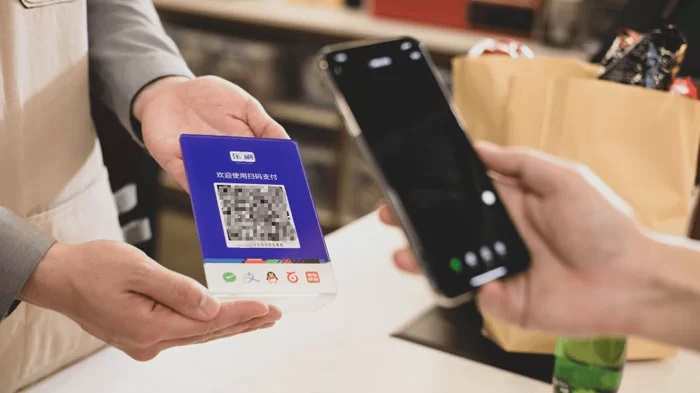
Additional Tips for Managing Finances in Tibet
- Plan Ahead: Make sure to exchange currency in Lhasa where the rates are generally more favorable. While you can exchange money in other cities, options might be limited and rates less competitive.
- Prepare for Emergencies: Carry a small amount of extra cash in smaller denominations to handle unforeseen expenses or minor purchases.
- Secure Your Funds: Due to occasional instances of scams and counterfeit issues, be discreet when handling large sums of money. Avoid displaying high denomination banknotes such as 100 RMB bills in public.
- Banking Options: Tibet now hosts branches of major Chinese banks like the Bank of China, Agriculture Bank, Construction Bank, Commercial Bank, and the Postal Savings Bank. These institutions form a reliable network for cash withdrawals and other banking needs in both urban and rural areas.
Final Thoughts
Navigating the financial system in Tibet requires an understanding of local customs, awareness of currency denominations, and familiarity with available banking services. From the basic structure of the Renminbi to practical tips for withdrawing cash from ATMs and safely exchanging money, every detail contributes to a smoother travel experience. As mobile payments become more prevalent, travelers can benefit from a blend of modern digital solutions and traditional cash transactions.
While it’s unnecessary to lug around a hefty sum of cash—even if mobile payments or credit cards aren’t an option—most international travelers joining organized tours will find that the bulk of their expenses is already covered within the package. Typically, these tour packages include accommodations and transportation throughout the Tibet Autonomous Prefecture, as Journey2tibet ensures a seamless travel experience.
The only extra costs you might incur outside of your tour package are for meals and personal expenses. Our tours provide certain meals, such as hotel breakfasts, within the package. However, when staying in more remote lodges, like those near Everest Base Camp, breakfast is usually optional and not bundled into the tour cost. On average, meals in Tibet tend to cost between 8 to 12 US dollars per day—roughly 60-80 RMB—making it manageable to budget for daily food expenses.

